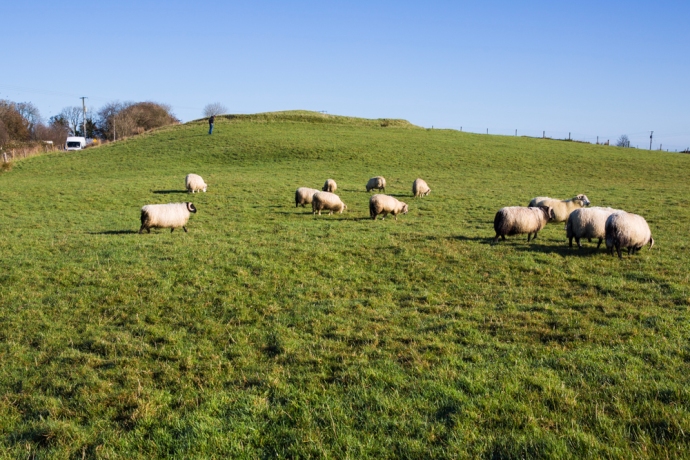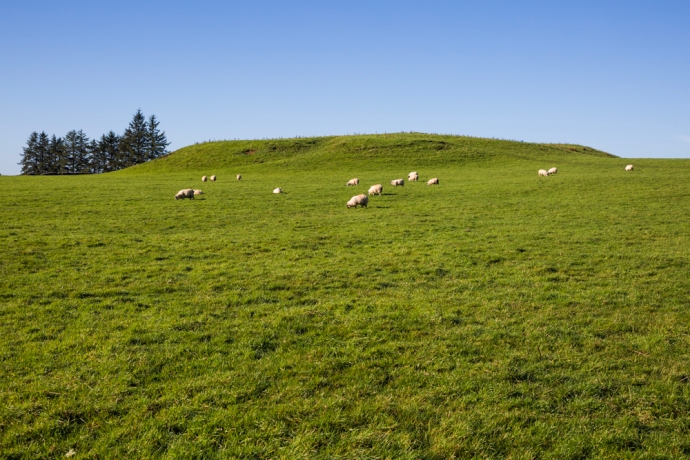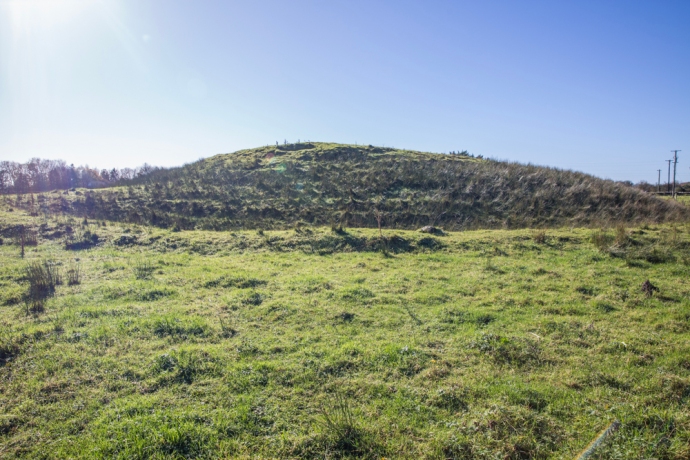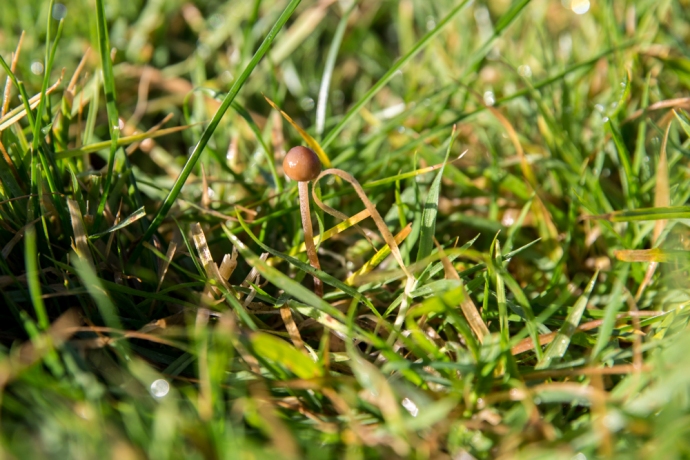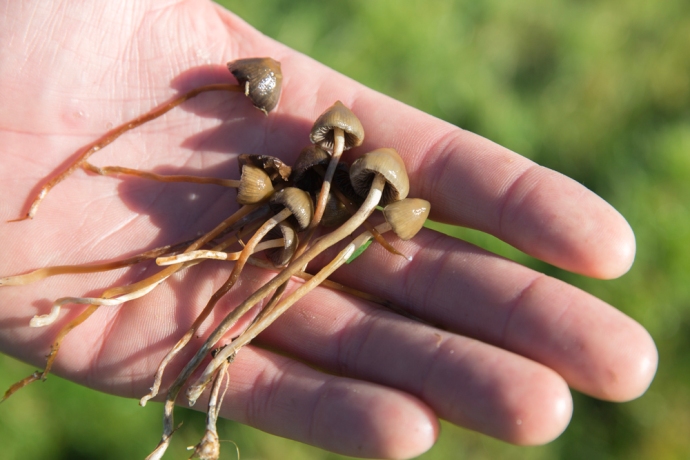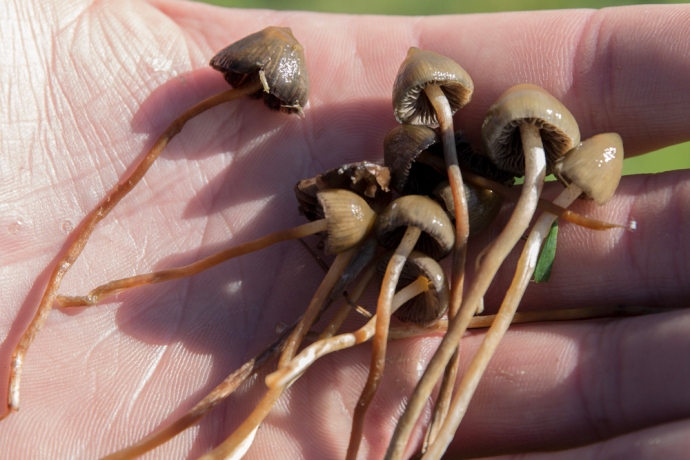This story has everything. It takes place over 3,000 years and is full of intrigue and mystery, the struggle for survival, buried treasure and fairies and avarice.
It started for me with a visit to the National Museum in Dublin in 2014. I was in a rush and had little time to study the exhibits, but a particular interest was the collection of bronze age gold artefacts, so I took lots of photos to review later. And then promptly forgot about them. I rediscovered those photos the other day and was struck by something that I hadn’t noticed at the time. Some of the exhibits came from County Clare. In particular from the, so named, Mooghaun Hoard or the Great Clare Find, near Newmarket-on-Fergus. This hoard dated at 800-700BC was the largest hoard of gold jewellery ever found in Europe. It is thought to have originally comprised up to 300 pieces and the story surrounding it is fascinating.

Part of the gold hoard from Mooghaun comprising five collars, seven bracelets two neck rings and a ring. Replicas of 120 bracelets and two ingots which were also part of the hoard but are now lost. National Museum Dublin.

Three gold collars. Mooghaun Find. National Museum Dublin
The gold was discovered by a number of railway workers clearing land for the Limerick to Ennis railway, on a right of way near Dromoland Estate, in 1854. They unearthed a stone box containing twisted metal which, at first, they did not recognize and indeed threw some into the nearby lake. They soon realized it was however dirt encrusted gold. With mad haste they ran 1.5 miles to the town of Newmarket, where some of the gold was quickly melted down by silversmiths keen to profit.
The rush to melt it down may have been driven by thoughts this was ‘fairy gold’. Ancient legends speak of bones and charcoal contained in buried vessels that in reality were golden coin and ornaments belonging to the ‘good people’, or fairies, and that they returned to gold during the night. But if watched with proper precautions and ceremonies, the fairy gold at daybreak would still remain gold. Their haste may have been a desire to extract the wealth before it returned to bones and ash.
Nevertheless it is an irreparable loss to Ireland’s heritage. It is believed that 34 pieces have survived, the rest melted down for bullion value. Gilt-bronze casts were made of some of the pieces prior to their destruction. Three months after the find there was an exhibition of remaining pieces, which were for sale. Due to the expense, the Royal Irish Academy acquired only 12 pieces, which included five collars and two neck-rings and The British Museum purchased a collar and thirteen bracelets. The rest were melted down.
How they came to be deposited there is unknown. They may have been a gift to appease the gods or they may have been hidden to avoid being lost to attacking tribes. Whatever the reason it seems we will never know. Then I discovered something really interesting. The find is less than a kilometer from the ruins of a massive megalithic structure, the impressive Mooghaun Hill Fort or ‘Hill of the Three walls’, the largest hill fort in Europe. Researchers agree that the trove must be connected in some way.
Newmarket-on-Fergus is about 45 minutes drive from my home so I had to have a look and headed out there the very next day. It was easy enough to find. The monument is controlled by the OPW. A car park, well laid paths and lots of helpful signage. The winter weather was kind enough with rain holding off.
The Fort occupies an entire hill with its three massive concentric ramparts covering an area encompassing 27 acres. Within the walls would have would have been a community ruled over by a local king and his community of followers and subjects. There would have been housing for a few families, livestock and areas for crops. It is now covered in a forest of birch, ash and hazel but at the time of construction would have stood dominant, on a 300m high bare limestone hill, as a monumental statement of power and authority. The king would have controlled an area of 170 square miles with perhaps 9,000 people. It is estimated that over 2,000 of these would have been engaged in constructing the walls which may have taken up to 20 years to complete.
The walls have degraded significantly, overgrown in places and mostly linear piles of rubble. In places though signs of the original facing of the walls can be seen

Wall of the Inner Rampart, Mooghaun Hill Fort

Inner Rampart showing original (?) facing.
This community may have occupied the site for 1,500 years and while there is no record of the cause of its demise, by about 500AD the abandoned site was occupied by a new community. They made their homes there, using stones from the original hillfort’s ramparts. They built a number of circular drystone cashels of which two survive in remarkable condition, having been repaired and adapted over the years. One was used for picnics by the inhabitants of Dromoland Castle in the 18th century.
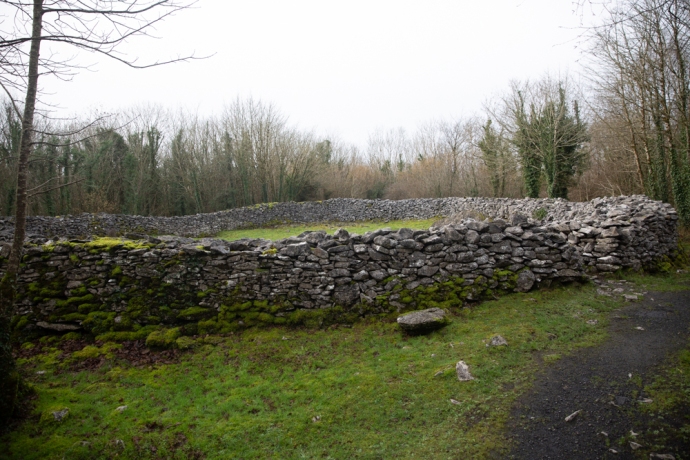
View of Upper Cashel. Mooghaun Hill Fort

Lower Cashel. Moohaun Hill Fort

Detail of wall of Upper Cashel
After viewing with wonder the fort and its rubbly remains, I rambled on through the surrounding woods. A truly beautiful and peaceful place. Depite the winter having stripped the trees of foliage it was quite a treat with tall straight birch, ash and hazel projecting skyward from a thick carpet of leaf litter.
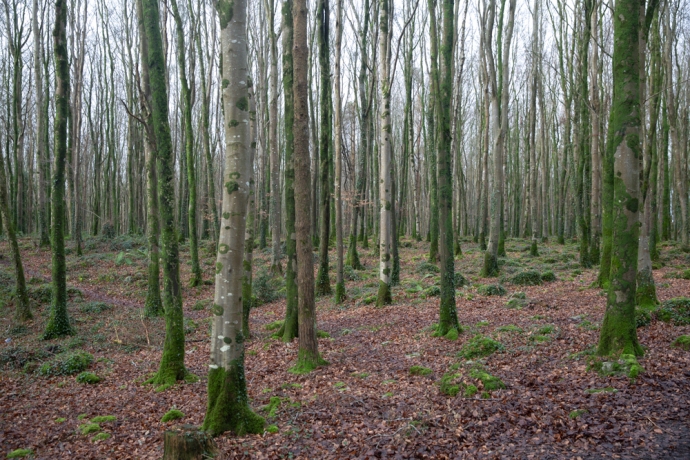


Many of the trees, boulders and walls are covered with a lush green assemblage of mosses, ferns and ivy creating intriguing vertical gardens contrasting with the brown forest floor. In the misty, hazy light it was invitingly beautiful.


I wandered on, losing track of time, before reaching the end of the woods, defined by yet another wall, built this time by the Dromoland Estate. The Estate is surrounded by a wall, in many places with coping comprising vertical limestone slabs.

Wall separating Mooghaun Woods from fields in the Dromoland Estate.

Dromoland Estate boundary wall surrounding Mooghaun Woods

Boundary wall for Mooghaun Woods. with coping.
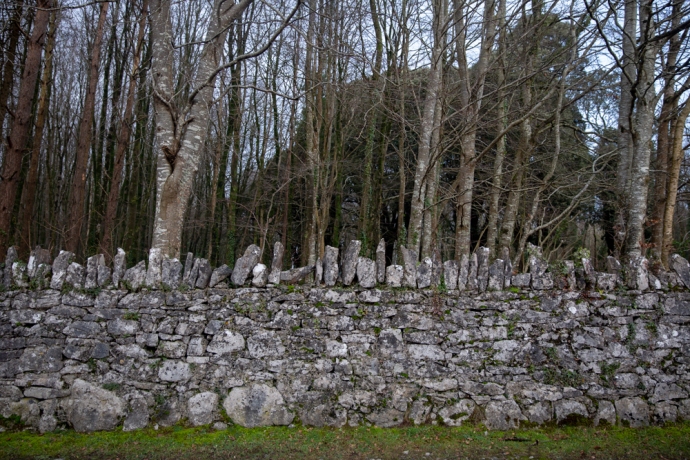
Coping on boundary wall here has vertical limestone slabs
I met a local, Tommy, taking a walk through the wood. We chatted for a while and I asked him if he knew where the gold hoard was found. As it turned out he lives adjacent to it and gave me directions as to where it was. I found the spot which was where the railway passes close to a small lough (this is the lake which figures in the descriptions of the find). Standing on the railway bridge it was easy to imagine the scene that day in 1854 and the life-changing excitement that the discovery brought to these navvies.

Location of the Mooghaun Hoard find. It is thought the find was roughly at the position where the train is, adjacent to the lake
With my thoughts planted firmly in past millenia and the exigencies of life in ancient times I walked on. I passed a ruined cottage. This jolted me back to this century. The ruin interested me because it was a stone cottage with a corrogutaed iron roof, which in my experience in Ireland was unusual. It gave the whole building a rusty red appearance. This had once been a comfortable residence and though overgrown now had lovely views of a large turlough beyond grassy slopes. A peek through an open window suggested its abandonment but as is the norm here I could only speculate on the back story.

Abandoned cottage Mooghaun North.

Inside the abandoned cottage at Mooghaun North

Oak tree and outbuilding at abadoned cottage
On the way back to my car, though I met Tommy again returning from his walk. I thanked him for helping me find the site and took the opportunity to ask about the cottage. He told me it had been occupied by two bachelor brothers, who died in the mid 90s. They passed it on to heir niece who was settled elsewhere so declined to move in. Since then it has lain abandoned and crumbling. Sadly it is beyond repair now. Tommy added that it was used as a polling station for elections, a common practice it would seem, with private houses being used in remote communities where many could not access a booth otherwise.
So there it is. That visit to the museum five years ago opened up a story highlighting yet again the fascinating, interwoven connections of Ireland to its people, land, culture and heritage, and the amazing discoveries that I continue to make.



